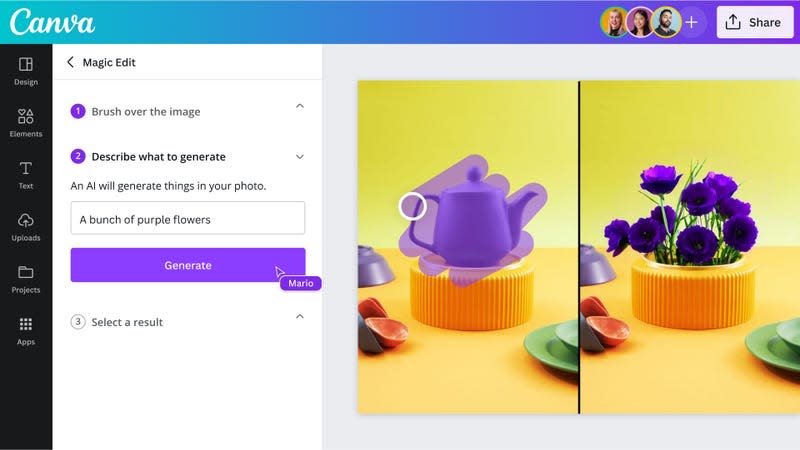Why Canva isn't describing its new AI tools as AI

Canva users can have AI generate content and visuals from a simple text prompt.
Canva, which makes tools to create presentations and social media graphics, is one of many companies upgrading its offerings with artificial intelligence. But instead of calling its new features AI Canva is labeling them “Magic.”
Users can upload an image or enter text in a prompt, and Magic Design will generate a selection of personalized templates. With Magic Edit, they can add an element to any photo. Magic Write generates written content—like website copy or presentation summaries—onto a banner or a slide.
Read more
Now that AI is starting to go mainstream, Canva and other companies need to decide how to present a still-unfamiliar technology to the general public, and how much they should disclose about what’s going on behind the scenes.
“Someone who isn’t focused on technology at all or thinking about the particular tools they use, like a florist or someone working at a bank or just everyday people, they probably aren’t thinking terribly much about this,” said Cameron Adams, co-founder and chief product officer at Canva. “And it is going to be quite hidden to them. But they will see the improvement.”
How should companies communicate AI?
Launched in 2013 in Sydney, Australia, Canva has expanded from serving graphic designers to offering a range of office tools, like virtual whiteboards and website creation, that are accessible to non-experts. The startup, which is now valued at $25 billion, has more than 110 monthly million users.
When the company was researching how to market its new tools, Adams said the team found that “magic” was an effective term because it conveyed both a wow factor and ease of use, and had a positive connotation. (Magic also alludes to a quote by science fiction author Arthur C. Clarke: “Any sufficiently advanced technology is indistinguishable from magic.”)
“If you mentioned something AI, it can be a little bit off-putting, like you’re kind of dealing with the machine,” Adams explained. “But when you’re talking about magic…they’re more likely to experiment with it.”
The company has nonetheless added footnotes across its tools, to remind users after each query that the content they’re receiving is AI-generated. And it’s encouraging customers to be equally transparent about their use of AI via Canva’s tools. The terms of use for Magic products state that AI’s role in formulating any content must be “clearly disclosed” in a way that no reader could possibly miss and a typical reader could easily understand. Users are expected to review all AI-generated output before sharing it, and may not “mislead anyone that the content generated by AI Products is human-generated.”
More from Quartz
The split of the African plate could gift six landlocked countries a coastline
How Credit Suisse’s demise strengthens Switzerland’s place in global finance
Sign up for Quartz's Newsletter. For the latest news, Facebook, Twitter and Instagram.
